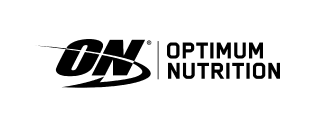
- Health advice
- Jan 19, 2018
Whether it’s your child’s first exciting year at school or they’re heading back to school for another year, it’s an ideal time to make sure they have all their nutritional basics covered so that they can hit the ground running in the new school year.
Back to school
Children grow and develop at a very rapid rate so it’s important to ensure that they have good levels of nutrients available during this critical period for their general health and wellbeing.

References
Sound nutritional base
Your child’s nutritional requirements tend to vary widely and a balanced diet plays an important role in their healthy growth and development. Consequences of poor nutrition include failure to thrive, intellectual difficulties and childhood obesity, and a vitamin or mineral deficiency may take weeks, or even months to emerge. Children who are fussy eaters or those with food allergies or intolerances are at greater risk of developing nutritional deficiencies. Common childhood nutritional deficiencies in Australia may include vitamin D, calcium, zinc, iron, iodine and omega-3’s.Children’s multivitamin and mineral formula
A good quality children’s multivitamin and mineral formula provides ‘nutritional insurance’ for children who may be missing out on important nutrients in their diet. A multivitamin and mineral formula can help to support children who may suffer from common childhood nutritional deficiencies including vitamin D, calcium, zinc, iron and iodine. Look for a children’s multivitamin and mineral formula that is free from artificial colourings, flavourings, sweeteners or preservatives.Omega-3’s and brain health
Omega-3’s from fish play an important role in supporting brain development during childhood. Many children are not getting enough omega-3’s because they don’t regularly eat enough cold water fish. Omega-3’s are found in high concentrations in the brain, providing optimal learning ability, mental development, cognitive function and neurological development. Your body cannot manufacture these omega-3’s so you need to obtain them from your diet. Look for a good quality children’s fish oil supplement that is sustainably sourced from wild, cold water fish that have been molecularly distilled, exceeds the Australian Standards set for mercury and other heavy metals, and does not contain any artificial colourings, flavourings or sweeteners. Children usually enjoy chewable capsules as they don’t have a fishy taste or smell.Immune health
Children have an immature immune system, so are more susceptible to infections and going back to school means mixing with a lot of other children, so the risk of developing a respiratory infection or tummy bug is high. Upper respiratory tract infections (URTI’s) in particular, are very common in children, who average between 6-8 each year. Directly supporting the immune system can be achieved with herbs and nutrients via several mechanisms including stimulating, balancing or maintaining the integrity of the immune system and by resolving nutritional deficiencies such as vitamin D and zinc. Echinacea on the other hand, stimulates or balances immune function while providing anti-inflammatory, antibacterial and antiviral activity. Echinacea enhances the immune response even in healthy people. Children’s immune disturbances tend to accumulate and if left untreated may lead to health problems including poor immunity, low energy, failure to thrive and a tendency to allergies.Mr Vitamins Recommends

References
- http://www.betterhealth.vic.gov.au/bhcv2/bhcarticles.nsf/pages/Food_and_your_life_stages?open
- www.biology-online.org/dictionary/Gastrointestinal_tract
- Bone, K 2003, A Clinical Guide to Blending Liquid Herbs: Herbal Formulations for the Individual Patient, Elsevier, Missouri.
- Bove, M, 2001, An Encyclopaedia of Natural Healing for Children and Infants, McGraw Hill, New York.
- Braun, L & Cohen, M, (2010), Herbs & Natural Supplements: an evidence-based guide, Elsevier, Australia.
- http://www.dhaomega3.org/
- Difference Between DHA and EPA | Difference Between | DHA vs EPA http://www.differencebetween.net/science/health/difference-between-dha-and-epa/#ixzz22pHDi0Vc
- http://www.education.vic.gov.au/earlychildhood/development/default.htm
- Maintaining a healthy digestive system http://www.gesa.org.au/content.asp?id=105
- https://www.mja.com.au/journal/2012/196/7/incidence-vitamin-d-deficiency-rickets-among-australian-children-australian
- http://www.ncbi.nlm.nih.gov/pubmed/19931062
- http://www.nlm.nih.gov/medlineplus/ency/article/002456.htm
- Osiecki H (2014), The Nutrient Bible, 9th Edition, Queensland, Bio Concepts Publishing.
- Pizzorno, JE & Murray, MT, 2006, Textbook of Natural Medicine, Elsevier, Missouri.
Related Articles
Recently Viewed
- ${ variant.price | currencyFromCents } | ${ variant.title } ${ variant.price | currency } | ${ variant.title }
Sale



















